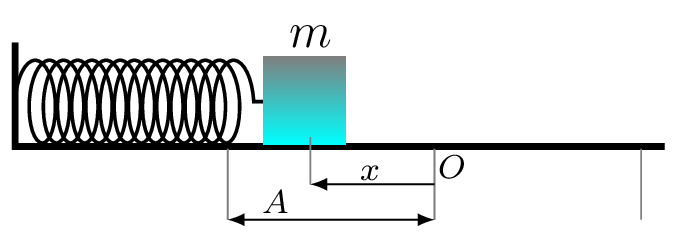Subsection 8.1.2 Hook’s Law for a Spring

From Hook’s law,
\begin{equation*}
\sigma\propto\epsilon
\end{equation*}
\begin{equation*}
\sigma =E\epsilon
\end{equation*}
\begin{equation*}
\frac{F}{A} =E\frac{\Delta L}{L}
\end{equation*}
\begin{equation*}
F =E\frac{A\Delta L}{L}
\end{equation*}
Since cross-sectional area, \(A\text{,}\) length of spring,\(L\text{,}\) and elastic constant of spring material, \(E\) are constant, we can assume
\begin{equation*}
k=\frac{AE}{L}
\end{equation*}
which provides stiffness constant of a spring it is also called a force constant.
\begin{equation*}
\therefore \quad F =k\Delta L \qquad \Rightarrow \quad F \propto x
\end{equation*}
where \(x=\Delta L\text{.}\)
